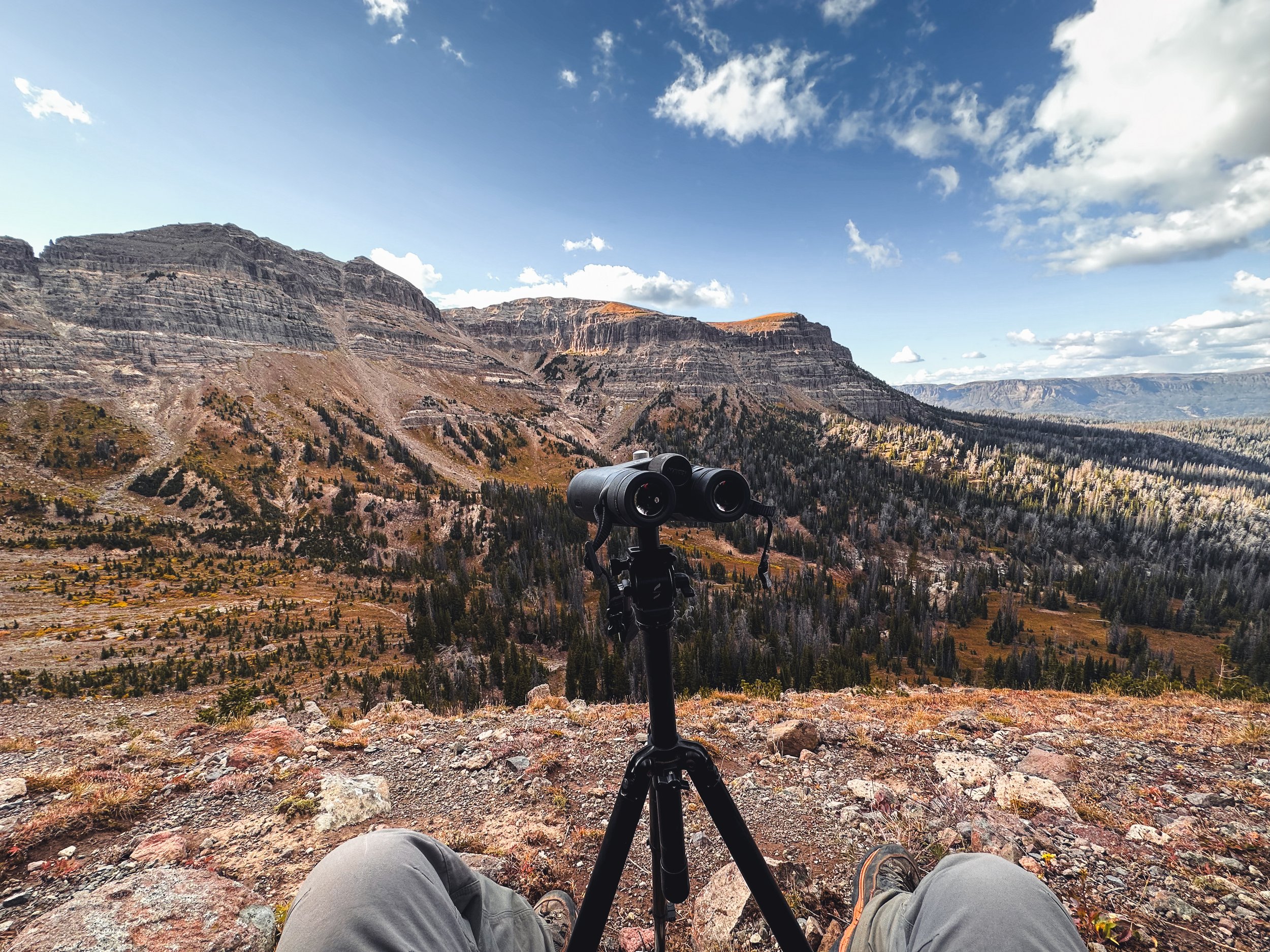Free Hunt West Guide
HOW TO PLAN YOUR WESTERN HUNT
Planning your first Western hunt can be as daunting as it is exciting. By breaking down the planning process into a few manageable steps, you can increase your chances of a successful and enjoyable hunt. Here’s how to start planning your Western hunt, focusing on breaking down your hunting unit, analyzing habitats, and sorting out travel logistics.
Step 1: Break Your Hunting Unit into Three Pieces
The first step in planning your Western hunt is to divide your chosen hunting unit into three distinct sections: a high-elevation area, a transition zone, and lowland areas. This segmentation helps in focusing your scouting efforts and understanding the movement patterns of your quarry.
You also can learn this framework for finding hunting spots via video lessons here.
High-Elevation Areas: These are typically the summer ranges for many game species. Here, animals enjoy the abundance of food and cooler temperatures. As snow begins to fall, though, game starts moving to lower elevations.
Transition Zones: These areas are critical during the early fall or the onset of winter. Animals use these corridors to migrate between their summer and winter ranges. Identifying these zones can be key to intercepting animals as they move.
Lowland Areas: These are the winter ranges where game congregates in the colder months. Food sources here are crucial for survival, making these areas hotspots for late-season hunting.
Step 2: Analyze the Habitats Critters are Focusing On
Once you've segmented your hunting unit, the next step is to analyze the habitats within these sections to determine where your quarry is most likely to be found during the time of year you plan to hunt.
Spring and Summer: In these seasons, look towards high-elevation areas where fresh growth and water sources attract game. Meadows, clearings, and water bodies are key areas to focus on. Learn more about the 3 classic elk habitats for September here.
Fall Transition: As temperatures drop, animals begin moving to areas with dense cover for protection against the elements and predators. Transition zones with mixed vegetation, such as aspen groves adjacent to conifer forests, are ideal. Discover how to hunt October mule deer with these free podcasts.
Winter: Focus on lowland areas where animals seek shelter from snow and cold. Look for south-facing slopes, which receive more sunlight and have less snow, making them attractive for feeding. Check out these tips for making sure you can get your vehicle out of any trouble during winter hunts.
Step 3: Work on Travel Logistics to Get to Those Spots
The final step involves figuring out how to physically access the areas you’ve identified on the map. This includes researching access roads, potential trailheads for backcountry access, and any restrictions or permissions needed to enter these lands.
Access Roads and Trailheads: Use online maps and forest service resources to identify roads and trails that lead to your areas of interest. Be aware of road closures or seasonal restrictions.
Backcountry Access: For remote areas, consider your method of travel. Hiking, horseback riding, or even off-road vehicles might be options, depending on the terrain and regulations.
Permissions and Restrictions: Ensure you have the necessary permits and understand the regulations of the land you’ll be hunting on. This might include state, federal, or private lands, each with its own set of rules.
Local Insights: Don’t underestimate the value of local knowledge. Engaging with local hunters, outfitters, or wildlife officials can provide invaluable insights into access points and game movements.
By methodically planning your hunt, from understanding the landscape and habitats to sorting out how to get there, you set the stage for a successful Western hunting adventure. Remember, a well-planned hunt not only increases your chances of success but also ensures a safer and more enjoyable experience in the great outdoors.
- Jaden Bales, Owner/Operator of Hunt West





